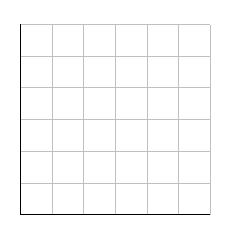| General steps |
Example
I = entertainment budget; X=video rentals; Y=CDs
U = X2/3 Y1/3
I = $120
Px = $2, Py = $10 |
Step 1: Set up TC: take
partial derivatives of U to get the tangency condition (TC):
MUx/MUy = Px/Py |
(1) Recall from previous
worksheet that for a Cobb-Douglas utility function: MRS = MUx/MUy = (Bx/By) .
Y/X.
So here, MRS = ((2/3)/(1/3)) . Y/X = 2.Y/X
Px/Py = $2/$10
So TC is: 2.Y/X = 2/10 |
| Step 2: isolate Y:
rearrange the tangency condition to express Y as a dependent variable. |
(2) 2·Y/X = 2/10 => Y=X/10 |
| Step 3: solve for X: plug
the expression for Y into the budget constraint and solve for X. |
(3) I = Px X + Py Y
120 = 2X + 10Y
120 = 2x + 10(X/10)
120 = 3X
X = 40 |
| Step 4: solve for Y: plug
the solution for X into the formula for Y derived in Step 2 and solve for Y. |
(4) Y = X/10 = 40/10 = 4 |
Step 5: check your answers:
Is the tangency condition met?
Is all income spent? |
(5) check results:
TC: MRS: 2.Y/X = 2.(4/40)
= 8/40 = 1/5
Px/Py = 2/10 = 1/5
BC: 120 = 2x + 10y = 2(40) + 10(4) = 120 |
